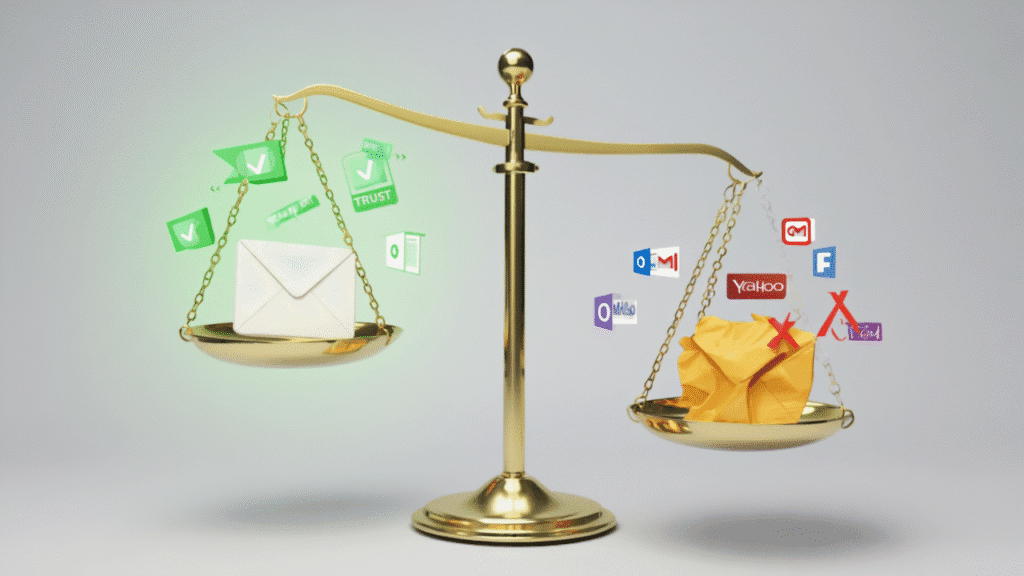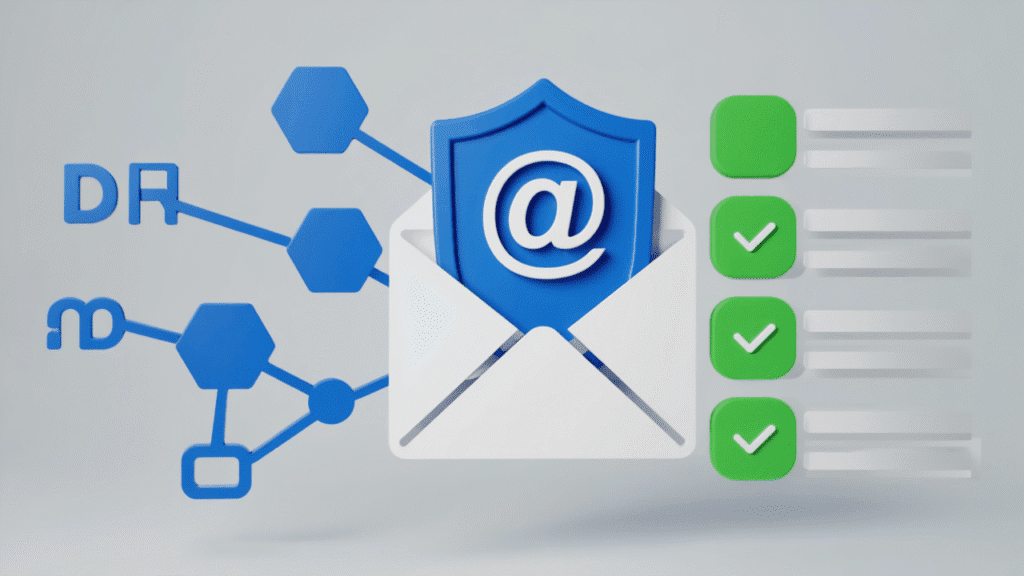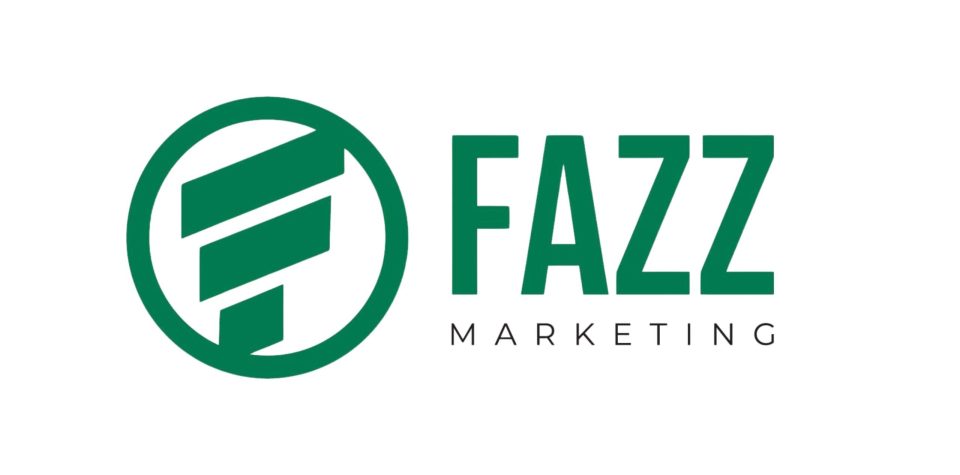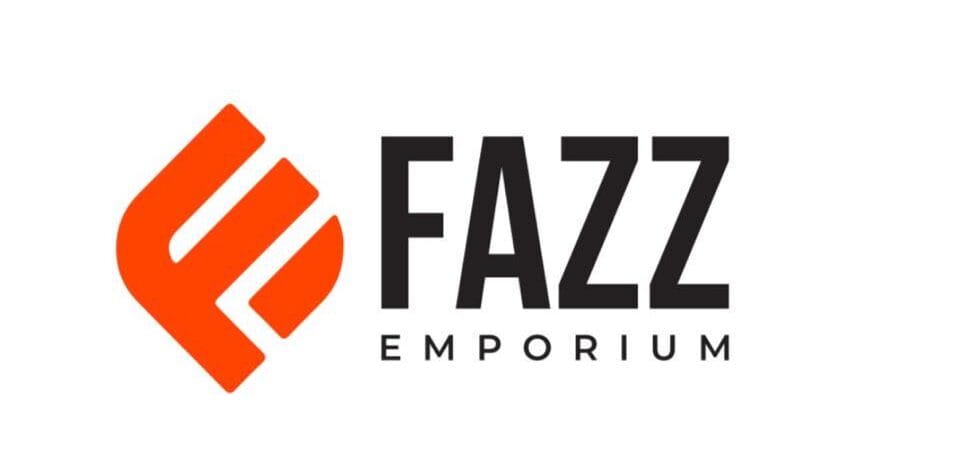You crafted the perfect cold email. You hit send… and get nothing but silence. The problem isn’t your copy—it’s your reputation. Your emails are likely in spam.The solution is cold email warm-up. This guide will show you how to fix your deliverability, build a trusted sender score, and finally get your emails into the inbox. Let’s turn that silence into conversations.
Table of Contents
What Exactly is Cold Email Warm-Up?

Cold email warm-up is the strategic process of gradually building a positive sending reputation with Internet Service Providers (ISPs) like Gmail, Microsoft, and Yahoo.
Think of it like building trust with a new colleague. You wouldn’t ask for a huge favor on the first day. Instead, you’d start with small talk, collaborate on minor tasks, and gradually build a relationship. Email warm-up does the same thing with ISP algorithms.
By slowly increasing your sending volume and, most importantly, generating positive engagement (replies, opens, moves to inbox), you signal to these providers that your email address is legitimate, desired, and not a threat to their users.
Why Warm-Up Matters: The Cost of Skipping This Step
Skipping the warm-up process is the fastest way to tank your email deliverability before you even start. The consequences are severe and often difficult to reverse.
The Algorithmic Gatekeepers: Gmail, Outlook, and More
Major email providers use sophisticated algorithms to protect their users from spam. These algorithms monitor thousands of data points for every sender. A new address that suddenly starts blasting hundreds of emails per day is a massive red flag. It screams “spammer” or “bulk sender,” triggering immediate filters that block your messages.
A proper warm-up gently introduces you to these gatekeepers, convincing them you’re a safe sender.
Key Metrics That Define Your Sender Reputation
Your reputation is built on three key pillars of engagement:
- High Reply Rate: Replies are the strongest positive signal. They indicate a genuine, two-way conversation.
- Low Spam Complaint Rate: If recipients mark your email as spam, it severely damages your reputation. This is why targeting and messaging are so important.
- High Open & Read Rates: Opens (tracked via pixels) and time spent reading an email show interest and engagement.
A warm-up process is designed to artificially generate these positive signals initially, so you can organically earn them later from your actual prospects.
How to Warm Up a Cold Email List (The Right Way)
A successful warm-up is a gradual, multi-week process. Patience is key. Rushing it will backfire.

Phase 1: The Foundation (Weeks 1-2)
- Start Small: Begin by sending just 5-10 emails per day to very engaged contacts you know well (e.g., colleagues, friends, existing clients). Ask them a simple question to encourage a reply, like “How’s your week going?”
- Engage Actively: Send emails to yourself and interact with them. Move them to priority folders, mark them as important, and reply to them.
- Subscribe to Newsletters: Use your new email to subscribe to popular newsletters (like HubSpot or Morning Brew). Open them regularly and click on links. This shows ISPs that you’re also a receiver of email, not just a sender.
Phase 2: Building Momentum (Weeks 3-4)
- Increase Volume Gradually: Slowly ramp up your sending volume by 10-20 emails per day each week. If you started at 10/day, aim for 20-25/day in week 2, and 35-50/day in week 3.
- Incorporate Your Network: Continue engaging with your network, but start incorporating less familiar contacts (e.g., LinkedIn connections) into your sends.
- Focus on Quality Content: Ensure every email you send is personalized, valuable, and designed to start a conversation. Avoid spammy language at all costs.
Phase 3: Maintaining a Healthy Reputation
Warm-up isn’t a one-time task. Once you’ve reached your desired sending volume, you must maintain your reputation.
- Monitor Metrics: Keep a close eye on your open rates, reply rates, and bounce rates. A sudden drop is a warning sign.
- Clean Your List: Regularly remove invalid, non-existent, or unengaged emails from your list to maintain a low bounce rate.
- Avoid Spam Triggers: Never use words like “FREE,” “Guaranteed,” or excessive exclamation points!!!! in your cold email template.
Manual Warm-Up vs. Automated Warm-Up Tools
- Manual Warm-Up: This involves doing everything yourself—sending emails to friends, replying, etc. It’s free but incredibly time-consuming, difficult to scale, and hard to simulate realistic engagement patterns.
- Automated Warm-Up Tools: Services like [Internal Link Suggestion: Consider linking to a review of tools like Warmup Inbox, Lemlist, Mailreach, etc., if you have that content] use AI and networks of real email accounts to automatically simulate this engagement for you. They send and receive emails on your behalf, dramatically speeding up the process and providing valuable analytics on your sender score.
For anyone running serious outbound campaigns, an automated tool is often worth the investment for the time saved and peace of mind.
Best Practices and Pro Tips for a Successful Warm-Up

- Use a Professional Email Address: Always use a custom domain (e.g.,
you@yourcompany.com), not a free provider like@gmail.com. It looks more professional and gives you full control. - Set Up Authentication Records: This is critical. Before you even start warming up, ensure your DNS records (SPF, DKIM, and DMARC) are properly configured. This proves you own your domain and prevents spoofing.
- Warm Up Every New Address: Every new email address you use for sending needs its own warm-up period. You can’t warm up a domain and then assume a new address on that domain is automatically warm.
- Consistency is Key: Sending 50 emails one day and then none for a week looks suspicious. A consistent, daily sending pattern is much more natural.
Pro Tip: Never warm up an email address by sending spammy content or to a purchased list. You will destroy your reputation instantly.
Conclusion: Warm-Up is Not an Option, It’s a Necessity
In the world of cold email, your sender reputation is your most valuable asset. It determines whether your message is heard or disappears forever. A proper cold email warm-up is the foundational process that builds that asset from the ground up.
By taking the time to gradually build trust with ISPs, you ensure that your carefully crafted outreach efforts actually reach their destination. You protect your domain, maximize your deliverability, and ultimately, win more customers.
Ready to start warming up? If you’re serious about scaling your cold outreach, consider researching automated warm-up tools to streamline the process. And if you have any questions or your own warm-up success stories, share them in the comments below!



Pingback: Is Your Website Slow? How to Make It Faster with Proven Methods – Fazz Marketing
Pingback: 8 AI tools I use to improve Lead Generation results – Fazz Marketing